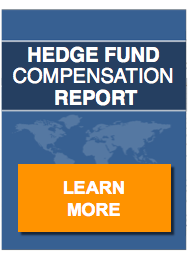Hedge funds, taken together, suffered another bad year in 2016. How bad is still being sorted out and no firm details will be forthcoming here, at least for the time being.
Anyone with a basic understanding of the industry knows that gains are difficult to attain in a bull market, particularly for hedge funds pursuing a long/short strategy. That said, we are reading that hedge funds have boosted 4th quarter 2016 investment in the stock market to the highest level in 2016, no doubt hoping to capitalize on the Trump market surge. Moreover, according to Bank of America Merrill Lynch, hedge funds increased their net exposure to 63 percent, a ratio not seen since the final quarter of 2015.
Thus far, the strategy seems to be paying off. Hedge fund gains, in the aggregate, rose 0.9 percent, representing the best performing month since July 2016, leaving the HFRI Fund Weighted Composite Index up 4.5 percent heading into to the final turn.
Industry Outflows
Net industry outflows are projected to be in the neighborhood of $53 billion for the whole of 2016, the worst year for hedge fund assets under management since the financial crisis. Another ominous turn of events takes shape in the form of hedge fund closures, which seem to be on pace to exceed hedge fund starts for the first time in the post financial crisis era.
An Uphill Battle
The stars appear to be aligned against the hedge fund industry. Negative net outflows, closures outpacing startups, and a persistent bull market combine to suggest an inauspicious 2017 for the industry.
Add to these woes, the uncertainties surrounding any new President’s administration, a fickle FOMC, as lead by Janet Yellen, and unprecedented geopolitical unknowns ranging from Brexit to the European Union to Israel to the future of the United Nations, all seasoned with a sprinkle of Kim Jong-un, a dash of Vladimir Putin and a pinch of Abu Bakr al-Baghdadi. Clearly, this is not a recipe that favors stable financial markets.
There is Hope
Closures outpacing startups may not be entirely a bad thing. With more than 11,000 hedge funds and around fifty percent of that number in break-even or negative territory, a culling may be in order. Were only the best performing hedge funds to survive, we would almost certainly see a revival of investor enthusiasm.
President-elect Donald Trump is on record as being in favor of replacing Janet Yellen as chair of the FOMC. Her term ends early in 2018. Were she to be replaced with a conservative leaning nominee, there would almost certainly be less resistance to interest rate hikes.
Regulation, under a Trump administration, will almost certainly be eased. This would reduce overhead for hedge fund firms and open the door a crack to innovative investment strategies.
Final Thoughts
Wall Street strategists, overall, project a modest 4.2 percent gain in the S&P 500 in 2017. This is a performance target well within the grasp of the industry. Reduced regulatory burdens, should they happen, will be a valid argument for reducing management and/or performance fees, which can only endear investors to the industry. All considered, there are sound reasons to expect great things from the hedge fund industry in the New Year.


